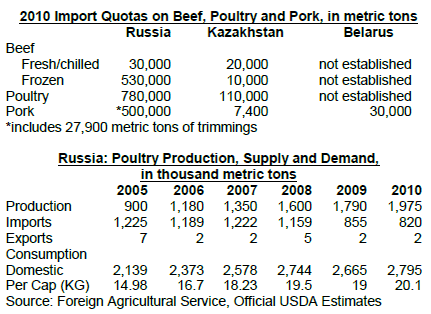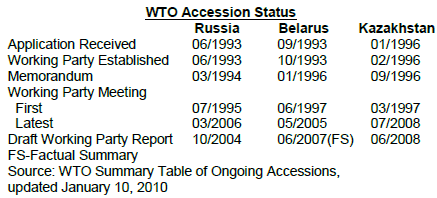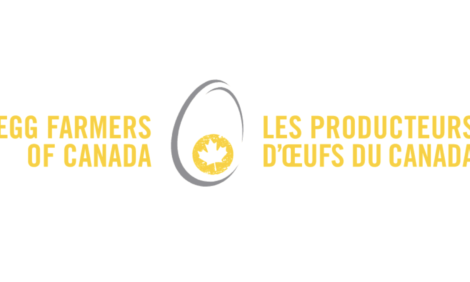



International Egg and Poultry Review: Global
GLOBAL - This is a weekly report by the USDA's Agricultural Marketing Service (AMS), looking at international developments concerning the poultry industry. This week's report focuses on the Russia, Belarus and Kazakhstan Customs Union. This reports also covers the effect of new foreign exchange rates on Venezuelan imports.In June 2009, Russian Prime Minister Vladimir Putin announced that Russian, Belarus and Kazakstan would seek WTO membership as a single customs union. WTO rules do not provide for countries to join as a customs union and current WTO members were unsure of how the plan would work.
The countries no longer seek membership in the WTO as a customs union, but will continue to seek accession as individual states. The formation of a customs union was finalised on 27 November 2009 and came into effect on 1 January 2010. Beginning 1 January 2010 a Common Customs Tariff will be implemented for the three countries. The Customs Code will not come into effect until 1 July 2010. Customs control procedures in Belarus will be shifted from national borders to the common customs union borders on 1 June 2010, followed by Kazakhstan on 1 June 2011.
As part of the customs union, the three countries plan to harmonize their tariff schedules for goods and unify the requirements for phytosanitary and veterinary control. An example would be US poultry inspected in Kazakhstan could continue into Russia without being checked again at the Kazakhstan-Russia border.
A tariff quota on imported meat, pork and fowl will go into effect on 1 January 2010. Within the Customs Union, Russia, Belarus and Kazakhstan have set quotas on the import of fresh and chilled meats.


Source: Bridges Weekly Trade News Digest Volume 13, Number 36; various news wires;

Source: ERS calculations using data from US Department of Commerce, Bureau of the Census
Venezuelan Imports Affected by New Foreign Exchange Rates
On 8 January 2010, the Government of Venezuela implemented a currency devaluation of the Bolivar Fuerte (Bs.) against the US dollar. The change cuts the value of the currency by half, from Bs. 2.15 per US dollar to Bs. 4.30. The government’s spending power will grow since it will receive twice the amount of Bolivars per dollar from oil exports. The central bank will subsidize a stronger Bs. 2.60 per US dollar rate for essential imports, such as foods and medicine. There is also an unofficial, parallel dollar market, where the Bolivar is often below Bs 6.0 and the official goal seems to be Bs 5.0. In January the parallel rate has trended over Bs 6.0.
As a consequence of the devaluation, local economists expect food prices will rise between 35 and 40 per cent in 2010. Although several inputs required by food companies can be bought abroad at the lower Bs. 2.60 exchange rate, other materials and equipment are subject to the rate of Bs. 4.30 per dollar and will mean a further increase in production costs.
CADIVI, Venezuela’s foreign exchange authority, determined that out of a total of 6,394 items that may be imported, 59 per cent will receive dollars at Bs 4.30 and the remaining 41 per cent at Bs. 2.60. Among the products to be imported under the 2.60 rate are essential items such as foods and medicines. The products to be imported under the 4.30 exchange rate include non-basic foods like yogurt, jam, peach, asparagus, apples and pears.
The classification of products that will be imported under the Bs 2.60 or Bs 4.30 rate of exchange brings a new requirement that companies had not foreseen. From now on, basic foods such as rice, sugar, milk, chicken, turkey, tuna, sardines, butter, agricultural commodities and oils, that is, products that will be imported at Bs 2.60 per US dollar, will require Certificates of Non-Production or Insufficient Production.
Even fruits that can be imported with foreign currency at Bs 4.30 will require these permissions, too. In the past, these products were considered as “first need” and therefore did not require nonproduction certificates, and licenses were obtained through the Ministry of Food.
Source: USDA/FAS GAIN Report using Media Reports and the Official Gazette; various news wires
Further Reading
| - | You can view the full report by clicking here. |











